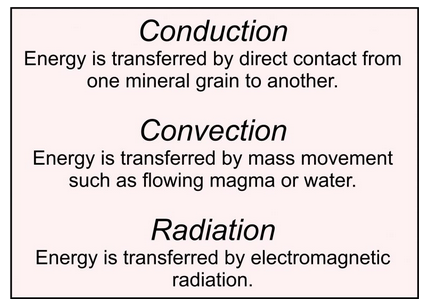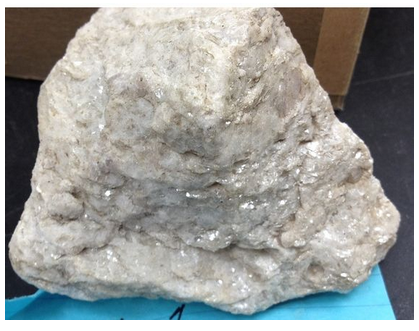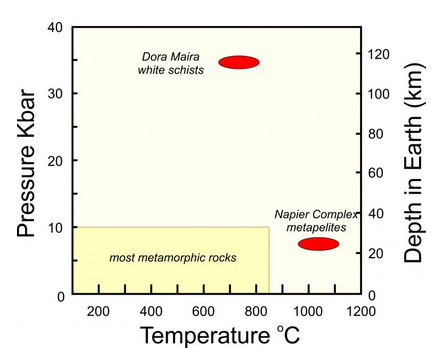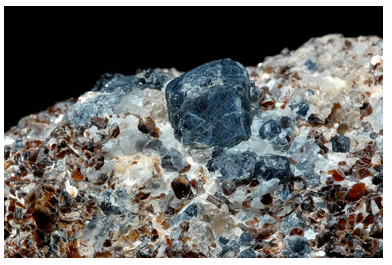8.2.1: 8.2.1 Heat and Temperature
- Page ID
- 17546
\( \newcommand{\vecs}[1]{\overset { \scriptstyle \rightharpoonup} {\mathbf{#1}} } \)
\( \newcommand{\vecd}[1]{\overset{-\!-\!\rightharpoonup}{\vphantom{a}\smash {#1}}} \)
\( \newcommand{\id}{\mathrm{id}}\) \( \newcommand{\Span}{\mathrm{span}}\)
( \newcommand{\kernel}{\mathrm{null}\,}\) \( \newcommand{\range}{\mathrm{range}\,}\)
\( \newcommand{\RealPart}{\mathrm{Re}}\) \( \newcommand{\ImaginaryPart}{\mathrm{Im}}\)
\( \newcommand{\Argument}{\mathrm{Arg}}\) \( \newcommand{\norm}[1]{\| #1 \|}\)
\( \newcommand{\inner}[2]{\langle #1, #2 \rangle}\)
\( \newcommand{\Span}{\mathrm{span}}\)
\( \newcommand{\id}{\mathrm{id}}\)
\( \newcommand{\Span}{\mathrm{span}}\)
\( \newcommand{\kernel}{\mathrm{null}\,}\)
\( \newcommand{\range}{\mathrm{range}\,}\)
\( \newcommand{\RealPart}{\mathrm{Re}}\)
\( \newcommand{\ImaginaryPart}{\mathrm{Im}}\)
\( \newcommand{\Argument}{\mathrm{Arg}}\)
\( \newcommand{\norm}[1]{\| #1 \|}\)
\( \newcommand{\inner}[2]{\langle #1, #2 \rangle}\)
\( \newcommand{\Span}{\mathrm{span}}\) \( \newcommand{\AA}{\unicode[.8,0]{x212B}}\)
\( \newcommand{\vectorA}[1]{\vec{#1}} % arrow\)
\( \newcommand{\vectorAt}[1]{\vec{\text{#1}}} % arrow\)
\( \newcommand{\vectorB}[1]{\overset { \scriptstyle \rightharpoonup} {\mathbf{#1}} } \)
\( \newcommand{\vectorC}[1]{\textbf{#1}} \)
\( \newcommand{\vectorD}[1]{\overrightarrow{#1}} \)
\( \newcommand{\vectorDt}[1]{\overrightarrow{\text{#1}}} \)
\( \newcommand{\vectE}[1]{\overset{-\!-\!\rightharpoonup}{\vphantom{a}\smash{\mathbf {#1}}}} \)
\( \newcommand{\vecs}[1]{\overset { \scriptstyle \rightharpoonup} {\mathbf{#1}} } \)
\( \newcommand{\vecd}[1]{\overset{-\!-\!\rightharpoonup}{\vphantom{a}\smash {#1}}} \)
\(\newcommand{\avec}{\mathbf a}\) \(\newcommand{\bvec}{\mathbf b}\) \(\newcommand{\cvec}{\mathbf c}\) \(\newcommand{\dvec}{\mathbf d}\) \(\newcommand{\dtil}{\widetilde{\mathbf d}}\) \(\newcommand{\evec}{\mathbf e}\) \(\newcommand{\fvec}{\mathbf f}\) \(\newcommand{\nvec}{\mathbf n}\) \(\newcommand{\pvec}{\mathbf p}\) \(\newcommand{\qvec}{\mathbf q}\) \(\newcommand{\svec}{\mathbf s}\) \(\newcommand{\tvec}{\mathbf t}\) \(\newcommand{\uvec}{\mathbf u}\) \(\newcommand{\vvec}{\mathbf v}\) \(\newcommand{\wvec}{\mathbf w}\) \(\newcommand{\xvec}{\mathbf x}\) \(\newcommand{\yvec}{\mathbf y}\) \(\newcommand{\zvec}{\mathbf z}\) \(\newcommand{\rvec}{\mathbf r}\) \(\newcommand{\mvec}{\mathbf m}\) \(\newcommand{\zerovec}{\mathbf 0}\) \(\newcommand{\onevec}{\mathbf 1}\) \(\newcommand{\real}{\mathbb R}\) \(\newcommand{\twovec}[2]{\left[\begin{array}{r}#1 \\ #2 \end{array}\right]}\) \(\newcommand{\ctwovec}[2]{\left[\begin{array}{c}#1 \\ #2 \end{array}\right]}\) \(\newcommand{\threevec}[3]{\left[\begin{array}{r}#1 \\ #2 \\ #3 \end{array}\right]}\) \(\newcommand{\cthreevec}[3]{\left[\begin{array}{c}#1 \\ #2 \\ #3 \end{array}\right]}\) \(\newcommand{\fourvec}[4]{\left[\begin{array}{r}#1 \\ #2 \\ #3 \\ #4 \end{array}\right]}\) \(\newcommand{\cfourvec}[4]{\left[\begin{array}{c}#1 \\ #2 \\ #3 \\ #4 \end{array}\right]}\) \(\newcommand{\fivevec}[5]{\left[\begin{array}{r}#1 \\ #2 \\ #3 \\ #4 \\ #5 \\ \end{array}\right]}\) \(\newcommand{\cfivevec}[5]{\left[\begin{array}{c}#1 \\ #2 \\ #3 \\ #4 \\ #5 \\ \end{array}\right]}\) \(\newcommand{\mattwo}[4]{\left[\begin{array}{rr}#1 \amp #2 \\ #3 \amp #4 \\ \end{array}\right]}\) \(\newcommand{\laspan}[1]{\text{Span}\{#1\}}\) \(\newcommand{\bcal}{\cal B}\) \(\newcommand{\ccal}{\cal C}\) \(\newcommand{\scal}{\cal S}\) \(\newcommand{\wcal}{\cal W}\) \(\newcommand{\ecal}{\cal E}\) \(\newcommand{\coords}[2]{\left\{#1\right\}_{#2}}\) \(\newcommand{\gray}[1]{\color{gray}{#1}}\) \(\newcommand{\lgray}[1]{\color{lightgray}{#1}}\) \(\newcommand{\rank}{\operatorname{rank}}\) \(\newcommand{\row}{\text{Row}}\) \(\newcommand{\col}{\text{Col}}\) \(\renewcommand{\row}{\text{Row}}\) \(\newcommand{\nul}{\text{Nul}}\) \(\newcommand{\var}{\text{Var}}\) \(\newcommand{\corr}{\text{corr}}\) \(\newcommand{\len}[1]{\left|#1\right|}\) \(\newcommand{\bbar}{\overline{\bvec}}\) \(\newcommand{\bhat}{\widehat{\bvec}}\) \(\newcommand{\bperp}{\bvec^\perp}\) \(\newcommand{\xhat}{\widehat{\xvec}}\) \(\newcommand{\vhat}{\widehat{\vvec}}\) \(\newcommand{\uhat}{\widehat{\uvec}}\) \(\newcommand{\what}{\widehat{\wvec}}\) \(\newcommand{\Sighat}{\widehat{\Sigma}}\) \(\newcommand{\lt}{<}\) \(\newcommand{\gt}{>}\) \(\newcommand{\amp}{&}\) \(\definecolor{fillinmathshade}{gray}{0.9}\)
Heat is, perhaps, the most significant cause of metamorphism. Heat is thermal energy that can move (flow) from one place to another or from one substance – such as rock, magma, or water – to another. Thermal energy is high for substances at high temperature and low for substances at low temperature.
Three processes transfer heat: conduction, convection, and radiation; but within Earth, heat transfer by radiation is insignificant. Conductive heat transfer occurs when heat flows naturally from a place of high temperature to one of low temperature with no associated movement of matter. Thus, for example, heat is always flowing from Earth’s hot interior to the cooler surface by conduction. And if a (hot) magma intrudes the (cooler) crust, the magma will cool as heat is conducted grain-by-grain into the surrounding rock, causing the surrounding rock to warm while the magma cools. This warming initially occurs only next to the magma body, but, over time, heat is conducted farther away. Magmatic intrusions can affect a large area.
Convective heat transfer, which is more efficient than conductive heat transfer, is the transfer of heat due to the flow of material, such as the flow of hot water or hot air. Within Earth, convection occurs mostly because of flowing water and flowing magmas. Heat transfer by water can have a significant, although generally quite local, effect. Heat transfer by convecting magmas can be much more significant and can warm huge regions of the crust. And in Earth’s mantle, the slow creep of solid rock due to plate tectonics also moves heat by convection.
Extremes of Metamorphism
Most metamorphic rocks we see were formed at temperatures of less than 800 to 850 °C and pressures less than 10 kbar. Yet, petrologists do occasionally find rocks that were metamorphosed at pressures greater than 10 kbar or temperatures greater than 850 °C.

The talc-kyanite schists from the Dora Maira Massif, Italy, are examples of extremely high-pressure rocks. The Dora Maira rocks have been called whiteschists because of their very light color (Figure 8.14). Besides talc and kyanite, they contain pyrope (white to pink Mg-garnet), phengite (a white mica related to muscovite), and quartz as major minerals. Coesite (a high-pressure polymorph of SiO2) and ellenbergite (another high-pressure mineral) are found as small inclusions in some of the pyrope crystals. Whiteschists are unusual rocks that have been reported from multiple places.

Chopin (1984) and others have concluded that the Dora Maira rocks may have originated as shallow crustal rocks but were subsequently metamorphosed at about 35 kbar pressure and temperatures of 700 to 750 °C. While the temperature is not extreme, the pressure is; 35 kbar is equivalent to a depth in Earth of more than 100 km (see the diagram in Figure 8.15). There are few places where rocks metamorphosed at that depth are found at Earth’s surface – especially if their protoliths originally came from the shallow crust. The Dora Maira rocks were carried to great depth and returned to the surface during the Alpine Orogeny in southern Europe.

Metapelites (metamorphosed clay-rich sediments) of the Napier Complex, Enderby Land, Antarctica, are examples of extremely high-temperature metamorphism. The photo in Figure 8.16 is an example. The rocks contain distinctive high-temperature mineral assemblages, which include the relatively rare minerals pigeonite, osumilite, and sapphirine. Several studies concluded that the Napier rocks were metamorphosed at pressures of 7 to 8 kbar and temperatures of more than 1,000 °C, perhaps as high as 1,075 °C. How did these rocks get so hot, and how did they escape melting? The answer to the first question is not known. Some investigators believe that a magmatic heat must have been involved. The answer to the second is that the rocks are of a composition that does not melt easily when water is absent. The Napier rocks were apparently metamorphosed in the absence of water.

Different places on Earth get their heat by different combinations of conduction and convection. Earth’s geothermal gradient, the rate at which temperature increases with depth, averages about 25 to 35 oC/km near the surface in most places. This gradient, also called a geotherm, is mostly due to conductive heat flow. The left column in Figure 8.17 shows temperature-depth relationships for a normal geotherm typical of regions where all heat transfer is by conduction.
In mountain belts and other places where volcanic activity occurs, convective heat flow due to rising magmas contributes much more heat than normal conduction. Consequently, temperature increases faster with depth than is normal (middle column, Figure 8.17). In some places, next to large igneous intrusions, contact metamorphism occurs and extremely high temperatures may persist for short times before the intrusions cool.
In subduction zones (right column, Figure 8.17), generally cooler temperatures are present. Descending slabs of wet cool ocean lithosphere, which have been continuously carried to depth for millions of years, cool the crust and upper mantle below. So, the rate of temperature increase with depth is less than normal.


